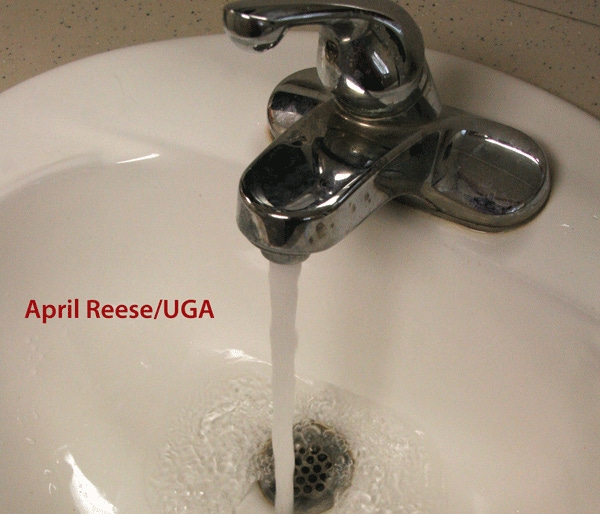May 20, 2011

More than a million Georgians drink water from private wells. Only 3 percent of those wells are tested for harmful bacteria each year.
As many as 700,000 Georgians drink water contaminated with bacteria, according to the University of Georgia Agricultural and Environmental Services Laboratories.
“If you are connected to a public water system, you are likely getting clean water. However, if you drink from your own well, it is your responsibility to test, treat and ensure safe drinking water,” said Uttam Saha, a program coordinator with the AESL.
Coliform is a common name of several types of bacteria from the same family. E. coli is a member of the coliform group.
“The presence of coliform or E. coli in well water indicates the water may contain potential disease-causing microorganisms, including bacteria, protozoa, viruses and helminths,” said Saha.
Bacteria can infect people with cholera and other serious diseases. Protozoa can cause diarrhea. Viruses that cause polio and hepatitis can be spread through contaminated water, and helminthes such as round worms, hookworm and tapeworm can develop.
“On average, 40 percent of the private drinking water wells in Georgia are contaminated with coliform bacteria, failing to meet Environmental Protection Agency municipal drinking water standards,” Saha said.
According to the UGA lab, one out of three wells have bacteria levels high enough to cause illness. About 30 percent of drilled wells deeper than 100 feet are contaminated. The soil layer above the water table isn’t thick enough to filter bacteria from shallow groundwater. This explains why 60 percent of bored wells shallower than 100 feet are contaminated.
The average contamination in wells constructed within the last 5 years is lower than the older wells, but still around 28 percent.
A septic system not working properly or too close to a well can be a bacteria source, he said.
“Contamination can occur if the well was improperly constructed, if the well is located in a depression that collects surface runoff, if the well casing is old and has developed cracks and holes, and/or if the wellhead is not properly protected,” he said.
Wells should be tested once a year for total coliform and E. coli contaminants, he said. Well testing for bacteria can be done through local UGA Cooperative Extension offices for $40, which includes a $30 test fee plus $10 for overnight mailing.
If the sample is submitted to the Athens, Ga., laboratory in person, the cost is $30.
Once a water sample is tested, the well owner will get a report showing results along with an unbiased interpretation. If a water sample tests positive for bacteria, corrective actions are provided. All consultations with the laboratory’s water specialists are free.
Testing requires a special way of collecting a water sample. Call 1-800-ASK-UGA1 to obtain a sampling kit or to request more information. County Extension agents have the skills, tools and support to deal with unique water problems. Well owners can also contact AELS directly at (706) 542-7690 or (706) 542-5350 or at the website http://aesl.ces.uga.edu.
You May Also Like




